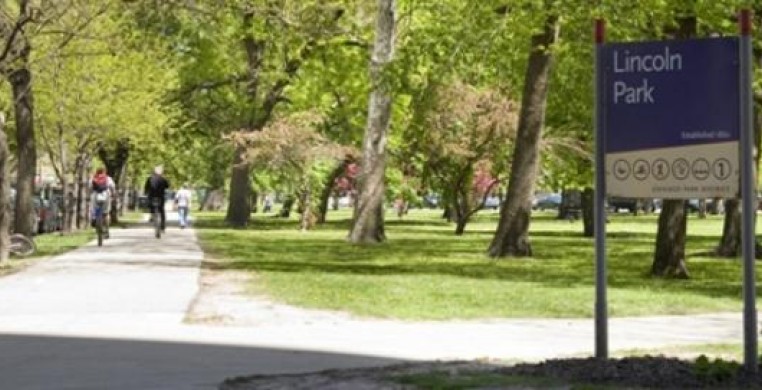Lincoln Park totals 1,188.62 acres and it lies along the lakefront from Ohio Street Beach in the Streeterville neighborhood, northward to Ardmore Avenue in Edgewater. The section of Lincoln Park adjacent to the Lincoln Park neighborhood contains the Lincoln Park Zoo, Lincoln Park Conservatory, Theatre on the Lake, a rowing canal, the Chicago History Museum, the Peggy Notebaert Nature Museum, the Alfred Caldwell Lily Pool, the North Pond Nature Sanctuary, Lincoln Park Archery Range (used by Lincoln Park Archery Club and North Side Archery Club), North Avenue Beach and Oak Street Beach, numerous playing fields, a very prominent statue of General Grant as well as, a famous statue of Abraham Lincoln and many other statues.
Within the park, guests will also find recreational facilities - the Lincoln Park Cultural Center, Margate Fieldhouse and Clarendon Park.
Be sure to check out one of the five playgrounds in Lincoln Park. Visit the newly renovated playground just off of Lake Shore Drive at Hollywood, it has a great water spray feature as well. The playground was renovated under the ChicagoPlays! program.
The American Planning Association (APA) 2010 National Planning Excellence, Leadership, and Achievement Awards honor the outstanding planning initiatives and individuals of the previous year.
APA singled out Lincoln Park as one of the 2009 Great Public Spaces in America, for its world-class amenities, historic landmarks, and buildings, and for the wide range of activities available to park users. Most notably, Lincoln Park is the result of a long-standing commitment by city leaders and citizens to protect 1,200 acres of some of Chicago's most valuable lakefront real estate for the public's use and benefit.
History
Lincoln Park began as a small public cemetery on the northernmost boundary of Chicago where victims of cholera and small pox were buried in shallow lakeside graves. Aware of the public health threat, citizens began demanding the cemetery's conversion to parkland in the 1850s. In 1860, the city reserved a 60-acre unused section as Lake Park. Shortly after the assassination of Abraham Lincoln (1809-65), 16th President of the United States, the park was renamed in his honor. The city allocated $10,000 for improvements, and nurseryman Swain Nelson created and implemented the park's first plan. An early donation of mute swans marked the beginnings of the Lincoln Park Zoo.
Citizens argued for the removal of the remaining burial ground. This contributed to a larger parks movement, and in 1869, the state legislature created three park districts: the South, West, and Lincoln Park Commissions, each responsible for the parks and boulevards in its region. Under the direction of the Lincoln Park Commission, bodies were exhumed and relocated to other cemeteries, and the park was expanded south to North Avenue and north to Diversey Parkway. Severe winter storms in 1885 resulted in the construction of a breakwater system which included the first of many landfill projects extending Lincoln Park's boundaries.
The independent park commissions were consolidated into the Chicago Park District in 1934, and Lincoln Park was expanded north to Foster Avenue. A final expansion in the 1950s brought the park to its current size of 1,208 acres. Throughout Lincoln Park's history, renowned artists, landscape designers, and architects contributed to its development. These included sculptor Augustus-Saint Gaudens, landscape designers Ossian Cole Simonds and Alfred Caldwell, and architects Joseph Lyman Silsbee and Dwight H. Perkins.
Paid parking is available in a number of Chicago Park District lots in the area. Get rates and additional information.
For directions using public transportation visit www.transitchicago.com.

